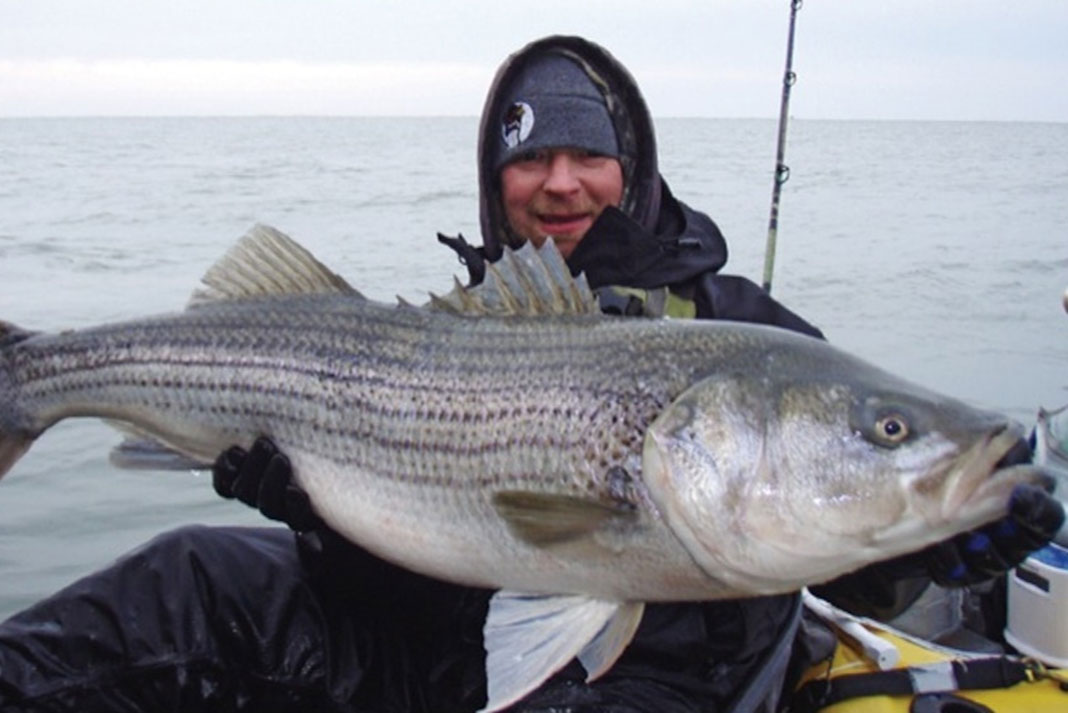Once upon a time anglers chased beautiful, scaly striped bass throughout the Northeast, reeling in catches as long as four feet in length and weighing more than fifty pounds. Today, the golden age of sportfishing striped bass is beginning to creep closer and closer to fantasy.
On October 23, 2024 the Atlantic Striped Bass Management Board of the Atlantic States Marine Fisheries Commission (ASMFC) shared findings that indicate while overfishing of striped bass, or rockfish, is currently not occurring, the stock remains overfished at it’s annual fall meeting in Annapolis, MD.
Results of the 2024 Chesapeake Bay Young-of-Year Striped Bass Survey indicate population struggling
In the Chesapeake Bay 2024 Young-of-Year Striped Bass Survey 22 sites in four major spawning areas were surveyed. Each site was visited three times throughout the summer with two samples collected each visit. At the end of the summer, the juvenile striped bass index was calculated as the average number of young of year bass per sample, young of year meaning striped bass at year zero.
In 2024, the striped bass young-of-year index was 2.0, down from the long-term average of 11.0. This marks the sixth consecutive year of poor reproduction in striped bass populations. According to the Maryland Department of Natural Resources, warmer, drier winters and decreased spring water flow rates are likely contributing factors to decreased success of the striped bass populations.
The recent decline in the striped bass population echoes previous challenges to the population.
After record high catches in the 1970s, striped bass numbers in the Chesapeake Bay plummeted to a near collapse of the population. In response, Congress passed the Atlantic Striped Bass Conservation Act of 1984 and imposed fishing moratoria in Maryland, Delaware, and Virginia.
Challenges to the striped bass population are varied, but catch and release could be a factor
The striped bass population rebounded from the 1970s decline, but in 2019 it was found that striped bass again were overfished, with particular concern regarding “dead discards”, or fish that die after catch and release. One assessment estimated that in 2017, 3.4 million striped bass died after being caught and handled by anglers.
In addition, decreased habitat in the Chesapeake Bay may also contribute to the decline in striped bass population. A recent study by researchers at William & Mary’s Batten School & VIMS found that salinity, temperature, current speed and dissolved oxygen levels are important factors in juvenile fish health and survival. The study also found that ten major spawning areas throughout the Chesapeake Bay showed decreases in suitable habitat over the study period; the Upper Chesapeake Bay showed an increase in early summer habitat.
“We did observe a pattern of higher numbers of juvenile fish in years with greater extent of suitable habitat,” said Rachel Dixon Ph.D. student at the Batten School of Coastal & Marine Science. “It appears that habitat is playing an important role in the survival and production of juvenile striped bass, but it’s likely one of many factors influencing the population.”
With striped bass population struggling in the Chesapeake Bay, stricter fishing regulations may be to come
With continued threats to the striped bass population, stricter fishing regulations may be in the future for Chesapeake Bay anglers.
While increased regulations may be the most effective way to protect the striped bass population, these regulations can have serious economic impacts for those whose livelihoods depend on striped bass.
“It would be devastating to us. It’s the only income I got,” said charter boat captain John Motovidlak in an interview with WBOC news.
“Juvenile numbers are closely linked to environmental conditions, including water quality and habitat availability in key nursery areas like Chesapeake Bay.” Allison Colden, executive director of the Chesapeake Bay Foundation, said in a statement.
“Many people in Maryland rely on striped bass for their food, their businesses, and their futures. Without action, that will all be at risk.”
Feature image: Striped bass in a net in the young-of-year survey. Maryland DNR | YouTube.


